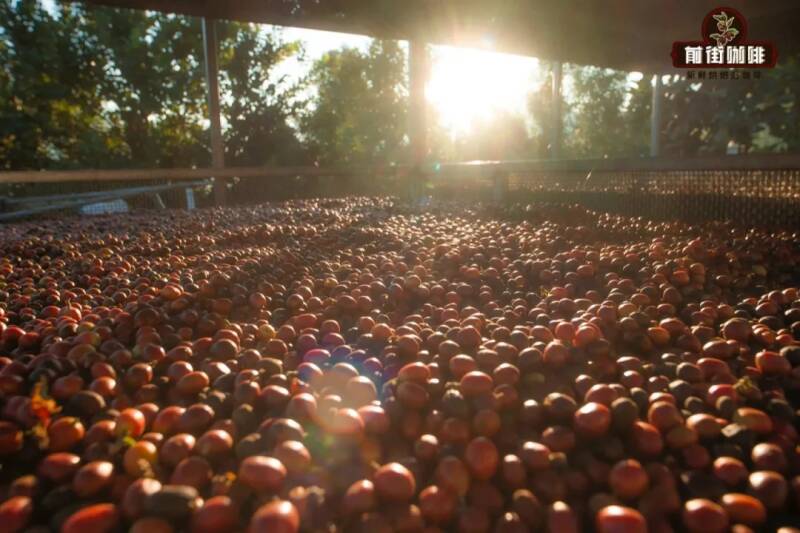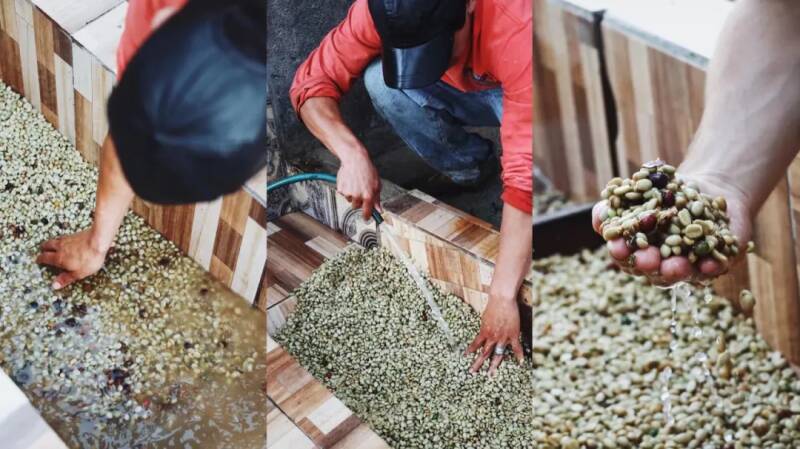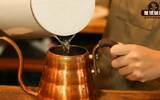The difference between sunning, washing and honey treatment of coffee. What are the coffee treatment methods? What's the difference between half-day drying and half-water washing of the flesh in the sun?
As we all know, "solarization", the earliest way of treatment, there is no one. Before other treatments were born, tanning was the only way to handle coffee in the world. At that time, the sun method was not called the sun method, because there was no such thing as the treatment of coffee beans. Just like we usually dry peanuts, we take the fruit for natural drying, use the temperature of sunlight and the flow of air to gradually reduce the moisture in the fruit, and then take out the seeds, that's all.

With the spread of coffee, more and more places began to grow coffee. However, the act of drying with the sun does not apply to all areas, because not all places will have plenty of sun throughout the day. If the coffee is not dried to a certain extent (the moisture content should be in the range of 10% to 12.5%), it is easy to produce mildew, moth and other factors that damage coffee beans during storage. If the drying time is too long, it is easy to breed mold in the drying process. Therefore, there is no way, many places began to adapt measures to local conditions, to study ways to dry coffee beans suitable for local conditions. In the 18th century, the Dutch developed water washing because the changeable weather in the West Indies made it difficult for coffee beans to be dried in the sun for a long time. Therefore, it is necessary to give priority to the removal of peel and pulp, then soak in water to remove pectin, and then dry the beans. In this way, the beans do not need too long to dry, and because the degree of fermentation is less, the coffee will have a very clean performance! The only disadvantage is that it consumes a lot of water, which can not be used in many places where water resources are not rich.

So, tanning and washing are easy for everyone to understand, but when it comes to the names of half-tanning and half-washing, are people scratching their heads and feeling confused?
In fact, there is no need to be confused, because they can be directly as the name suggests. And, although they are two names, they actually refer to the same treatment. Just because this treatment is a mixture of sun exposure and water washing, both the water washing process and the sun treatment process are used in the treatment process, half-half, so there is a saying that half-sun and half-water washing (although half-washing also refers to wet planing). And there are many names for this treatment, in addition to the previous two statements, there are peeling and tanning, as well as flesh solarization! So in this article, let's unify one point and call it pulp solarization.
This pulp solarization is a treatment developed by Brazil, the world's largest coffee producer, in accordance with local conditions. Although Brazil is accustomed to sun treatment, but the sun method used earlier is very rough, just put the coffee fruit on the ground at random to dry. The reason is very simple, the cost can be greatly saved. But the downside is that coffee is easily contaminated by a variety of foreign objects (such as dust), making the coffee itself odor. The decline in quality will lead to a drop in prices, so it is necessary to find another way out to make coffee have a better quality. On the other hand, it is impossible to use water washing in Brazil, because it belongs to a country where water resources are not rich. On the other hand, washing treatment needs to consume a lot of water resources, with an average of 10 to 20 tons of water per ton of coffee! Then the output is so high that it is completely impossible to wash it all with water.
So, in 1990, Brazil created such a unique approach. Through the combination of washing and sun treatment, coffee beans have a clean flavor without consuming too much water.
How is the flesh sunburn handled? Half-sun, peeled sun, flesh sun. With so many names, we can basically infer its processing flow! You can combine the meaning said in front of the street, and then think about how this treatment works.
Did you guess? The answer will be announced by the front street: the flesh sun will first throw the picked coffee fruit into the sink, screen out some floating defects and unripe coffee fruit, and then remove the skin, pulp, and a little pectin. Then wash (soak) for an hour. Because the time of soaking and fermentation of coffee beans is very short, so only a small part of the pectin has been washed away, and there is still a lot of pectin residue on the bean surface. Then, after washing, the coffee beans with pectin are spread flat on the African elevated net bed to dry! Due to the peeling of the peel and pulp, the time spent in the sun is greatly reduced, and the chance of coffee being contaminated is naturally reduced.
The hot honey treatment in Costa Rica also belongs to the pulp sun, but the biggest difference between it and the flesh sun is that it does not drip because it needs to retain more pectin! Then believe that there are careful friends found, yes! The Brazilian Hilado of Qianjie rations series uses half-sun treatment! It is boiled with strong nutty and chocolate flavors, mellow taste and soft acidity. Although it does not have a rich floral and fruity rhyme like Yega Chefe, the deep baked taste of Brazil is not inferior!
-END-
Important Notice :
前街咖啡 FrontStreet Coffee has moved to new addredd:
FrontStreet Coffee Address: 315,Donghua East Road,GuangZhou
Tel:020 38364473
- Prev

Recommended hand-brewed coffee pot? What capacity should I buy for a hand-brewed coffee pot? Can I heat a hand-brewed coffee maker?
Because the making of hand-brewed coffee requires continuous injection of hot water during the process, we can see that when making hand-brewed coffee, the barista will hold a professional hand-brewed pot in his hand to brew it. Because Qianjie uses a non-temperature-controlled version of the hand-boiling pot, boiling water is needed in advance before boiling
- Next

How long does it take to extract hand-brewed coffee? How long is the extraction time for hand-brewed coffee normal? Does the brewing time have to take two minutes?
When we make coffee, time is the only extraction parameter that cannot be actively and accurately controlled, because it is the result obtained by building together other parameters and various aspects. This also means that time can become a criterion for measuring other parameters. So in theory, as long as you can control the brewing time,
Related
- Being chased out of the rain in front of Starbucks?! Store: Sheltering from rain under umbrellas poses a safety hazard
- The white moonlight has changed?! Lucky launches "Big Winter Pear American"
- Hand-brewed coffee three-stage method, high-sweet and universal brewing method to share! What does the high sweet water level of hand-brewed coffee mean?
- What is the difference between raw, refined and full espresso coffee? How to extract espresso and taste good?
- A complete list of coffee bean names and their meanings! What is Yejia Shefi coffee? Where is Mantelin coffee?
- What grade does Arida Manor Kaduai coffee beans belong to? What treatment is Arida ASD slow anaerobic sun exposure?
- The milk tea cup becomes smaller?! Overlord Tea Girl launches a new "Return to Yunnan" series
- Accused of selling counterfeit and high-priced coffee beans! Well-known boutique coffee brand "Oukelao" bowed and apologized!
- How to make espresso dumplings? Can I eat coffee and glutinous rice balls together?
- Save the unformed and stagnant powder cakes in one second! What is the problem with stagnant water in the powder bowl of the espresso machine?

